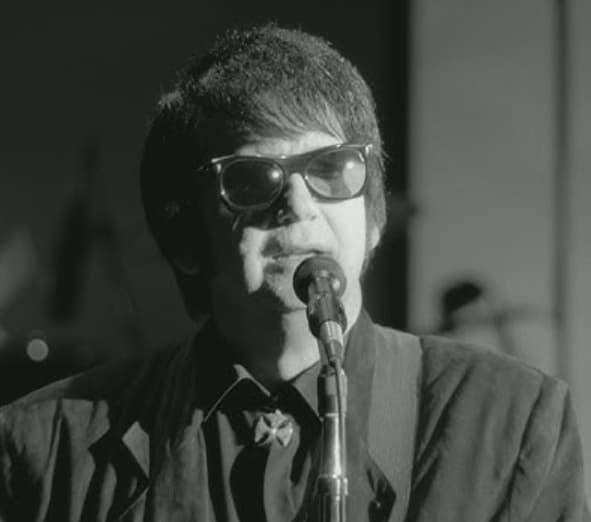
The Big O’s Triumphant Return: When Shadows Danced and a Legend Reclaimed the Stage
The air was thick with anticipation on that September night in 1987 at the Coconut Grove in Los Angeles. For those who grew up on the haunting melodies and operatic vocal drama of Roy Orbison, the sight was nothing short of miraculous. The man dubbed “The Big O,” whose career had seen peaks and devastating troughs, was back, not just performing, but backed by a literal who’s who of rock and roll royalty. This event, captured for the famed television special A Black and White Night, and later remastered for its 30th-anniversary release, presented a live rendition of one of his most iconic songs: “Running Scared.”
The original studio recording of “Running Scared” in 1961 had been a resounding success. Released on the Monument label, it soared to No. 9 on the UK Singles Chart and, perhaps more significantly, became his first top-ten hit in the United States, peaking at No. 7 on the Billboard Hot 100. This chart success cemented his distinctive style, marrying a bolero rhythm with his three-octave, power-house voice. It was a revolutionary sound for its time, dramatically different from the prevalent bubblegum pop.
The story behind the original song is one of masterful tension and anxiety. Co-written with his frequent collaborator Joe Melson, the track is a miniature opera, a perfect example of the “Orbison-style” narrative. It centers on a man who spots his ex-lover with a new flame. His initial, visceral reaction is to flee—to run scared—before the inevitable, agonizing moment when she acknowledges him. It’s a moment of profound vulnerability, captured in a relentless, building crescendo. The narrator is desperately trying to outrun not a physical threat, but the crippling fear of confrontation and the humiliating confirmation that he has been replaced. The entire song is built on that single, drawn-out moment of psychological dread, culminating in the chilling, soaring high note that captures the man’s exposed emotional core as he is forced to face the pair.
Fast forward to 1987. The performance of “Running Scared (Black & White Night 30)” is more than a simple re-tread; it’s a statement. Having endured years of personal tragedy and a period where his music was eclipsed by newer trends, this concert was Orbison’s triumphant affirmation of his enduring genius. Surrounded by acolytes—Bruce Springsteen, Elvis Costello, Bonnie Raitt, Tom Waits, and more, all dressed in matching black—the atmosphere was electric. This live version is imbued with a gravitas and depth that only the intervening decades of experience could provide.
The meaning of the song deepens in this context. While still a tale of romantic anxiety, the 1987 rendition feels like the performance of a man who has run scared from many things in life but is now standing his ground. The arrangement, while faithful to the original’s drama, benefits from the sheer force of the all-star band, adding a muscular, timeless rock energy. When Orbison’s voice—still miraculously powerful—hits that final, climactic note, it’s not just the fear of the man in the song, but the roar of a legend reclaiming his legacy. It’s a profoundly moving experience, reminding older fans of the immense emotional power music once held, and introducing a new generation to the man who made a career out of singing beautiful, heartbreaking songs about being afraid to lose. The live take is a testament to the enduring power of classic songwriting and the undeniable comeback of one of music’s most unique and treasured voices. This special became the foundation for his critically acclaimed and commercially successful resurgence.